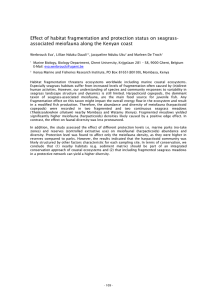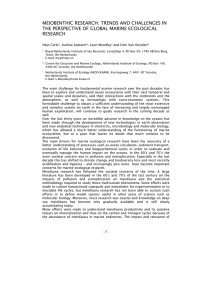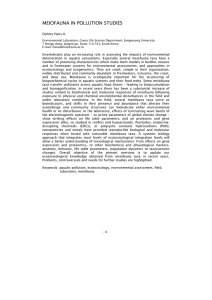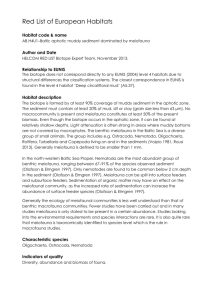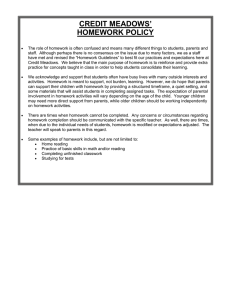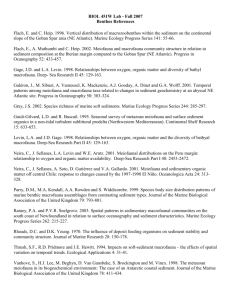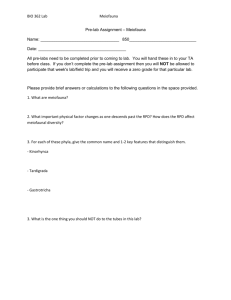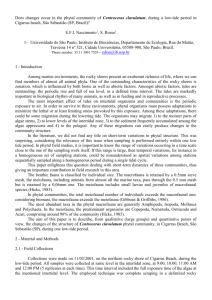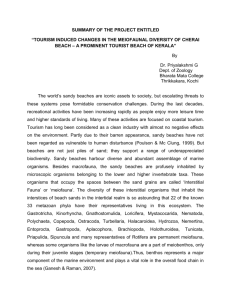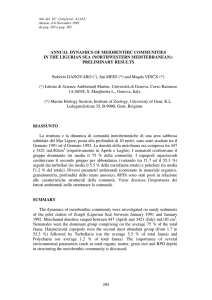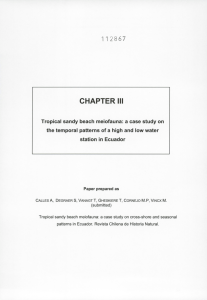Effect of habitat fragmentation and protection status on seagrass-associated
advertisement
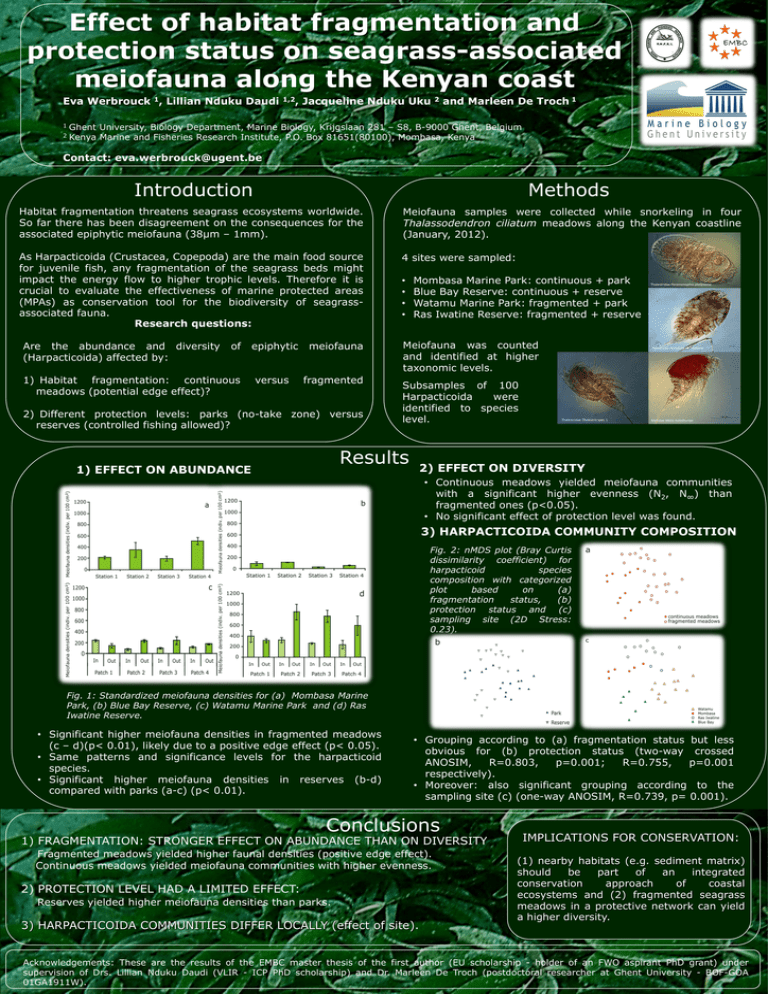
Effect of habitat fragmentation and protection status on seagrass-associated meiofauna along the Kenyan coast Eva Werbrouck 1, Lillian Nduku Daudi 1,2, Jacqueline Nduku Uku 2 and Marleen De Troch 1 Ghent University, Biology Department, Marine Biology, Krijgslaan 281 – S8, B-9000 Ghent, Belgium 2 Kenya Marine and Fisheries Research Institute, P.O. Box 81651(80100), Mombasa, Kenya 1 Contact: eva.werbrouck@ugent.be Introduction Methods Habitat fragmentation threatens seagrass ecosystems worldwide. So far there has been disagreement on the consequences for the associated epiphytic meiofauna (38µm – 1mm). Meiofauna samples were collected while snorkeling in four Thalassodendron ciliatum meadows along the Kenyan coastline (January, 2012). As Harpacticoida (Crustacea, Copepoda) are the main food source for juvenile fish, any fragmentation of the seagrass beds might impact the energy flow to higher trophic levels. Therefore it is crucial to evaluate the effectiveness of marine protected areas (MPAs) as conservation tool for the biodiversity of seagrassassociated fauna. Research questions: 4 sites were sampled: Are the abundance and diversity (Harpacticoida) affected by: of 1) Habitat fragmentation: continuous meadows (potential edge effect)? epiphytic meiofauna versus fragmented 2) Different protection levels: parks (no-take zone) versus reserves (controlled fishing allowed)? • • • • Mombasa Marine Park: continuous + park Blue Bay Reserve: continuous + reserve Watamu Marine Park: fragmented + park Ras Iwatine Reserve: fragmented + reserve Meiofauna was counted and identified at higher taxonomic levels. Subsamples of 100 Harpacticoida were identified to species level. Results 1) EFFECT ON ABUNDANCE Thalestridae Paramenophia platysoma Peltidiidae Peltidium cfr monardi Thalestridae Thalestris spec 1 Metidae Metis holothuriae 2) EFFECT ON DIVERSITY • Continuous meadows yielded meiofauna communities with a significant higher evenness (N2, N∞) than fragmented ones (p<0.05). • No significant effect of protection level was found. 3) HARPACTICOIDA COMMUNITY COMPOSITION Fig. 2: nMDS plot (Bray Curtis dissimilarity coefficient) for harpacticoid species composition with categorized plot based on (a) fragmentation status, (b) protection status and (c) sampling site (2D Stress: 0.23). Fig. 1: Standardized meiofauna densities for (a) Mombasa Marine Park, (b) Blue Bay Reserve, (c) Watamu Marine Park and (d) Ras Iwatine Reserve. • Significant higher meiofauna densities in fragmented meadows (c – d)(p< 0.01), likely due to a positive edge effect (p< 0.05). • Same patterns and significance levels for the harpacticoid species. • Significant higher meiofauna densities in reserves (b-d) compared with parks (a-c) (p< 0.01). • Grouping according to (a) fragmentation status but less obvious for (b) protection status (two-way crossed ANOSIM, R=0.803, p=0.001; R=0.755, p=0.001 respectively). • Moreover: also significant grouping according to the sampling site (c) (one-way ANOSIM, R=0.739, p= 0.001). Conclusions 1) FRAGMENTATION: STRONGER EFFECT ON ABUNDANCE THAN ON DIVERSITY Fragmented meadows yielded higher faunal densities (positive edge effect). Continuous meadows yielded meiofauna communities with higher evenness. 2) PROTECTION LEVEL HAD A LIMITED EFFECT: Reserves yielded higher meiofauna densities than parks. 3) HARPACTICOIDA COMMUNITIES DIFFER LOCALLY (effect of site). IMPLICATIONS FOR CONSERVATION: (1) nearby habitats (e.g. sediment matrix) should be part of an integrated conservation approach of coastal ecosystems and (2) fragmented seagrass meadows in a protective network can yield a higher diversity. Acknowledgements: These are the results of the EMBC master thesis of the first author (EU scholarship - holder of an FWO aspirant PhD grant) under supervision of Drs. Lillian Nduku Daudi (VLIR - ICP PhD scholarship) and Dr. Marleen De Troch (postdoctoral researcher at Ghent University - BOF-GOA 01GA1911W).
